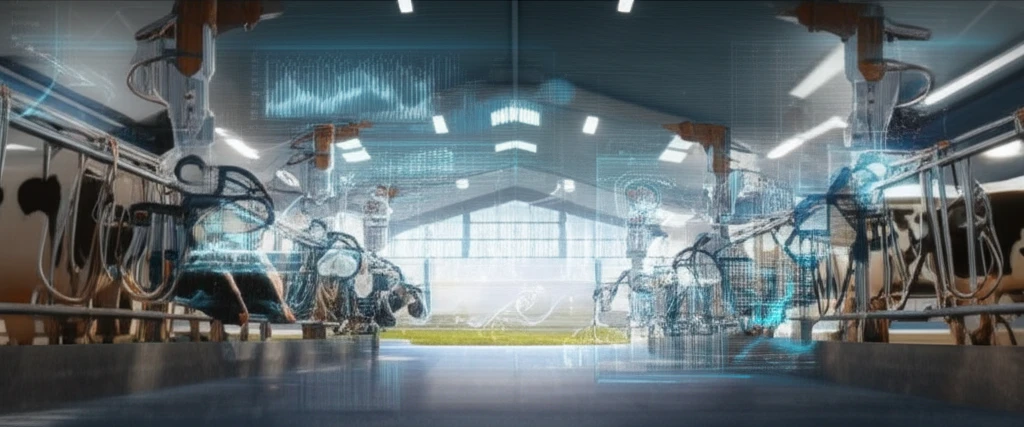
Smarter Milk: How New Tech is Changing Dairy Farming
"Discover how automated milking systems and advanced data analysis are optimizing dairy production and improving herd management for modern farms."
Dairy farming is evolving, and automated milking systems (AMS) are at the forefront of this change. These systems, where cows are milked several times a day at variable intervals, are becoming increasingly popular. But, this shift requires a closer look at how we measure and analyze milk production, especially when compared to traditional milking systems (CMS) where cows are milked twice a day at consistent times. The key question is: how do we accurately incorporate data from these new systems into our existing models for evaluating milk production?
One of the main challenges is that AMS herds and CMS herds often show different variances in their test-day observations of milk yield. To address this, researchers are exploring ways to refine genetic evaluation models. The aim is to account for the unique characteristics of AMS data, particularly the residual error variances, without completely overhauling existing evaluation methods.
This article delves into a study that proposes a constrained variance component estimation approach. This approach allows for the re-estimation of residual covariance matrices, which are vital for accurately assessing milk, protein, and fat yields. By understanding these adjustments, dairy farmers and industry professionals can make more informed decisions based on reliable data.
Understanding Residual Error Variance in AMS vs. CMS

In traditional dairy farming (CMS), milk yield observations are typically the sum of morning and evening milkings. However, in AMS, the measurement protocols can vary. Some farms measure the average daily milk yield over a week, while others use data from three successive milkings or a 96-hour period. These differences in data collection lead to variations in residual error variance—the unexplained variation in the data after accounting for known factors.
- Milk and Protein Yield: Residual variances were 16-37% smaller in AMS herds compared to CMS herds.
- Fat Yield: Residual variances were 42-47% larger in AMS herds.
- Daily Heritability: Milk and protein yield showed higher daily heritability under AMS, while fat yield was lower.
- 305-Day Heritability: No significant difference was found in milk and protein yield, except for second lactation milk yield. However, fat yield was consistently lower across all lactations under AMS.
The Future of Dairy Data
The integration of AMS data into existing evaluation models is crucial for the dairy industry's future. As more farms adopt automated systems, accurately accounting for the unique variances in AMS data will lead to more reliable genetic evaluations and better herd management practices.
By using methods like the constrained variance component estimation approach, researchers and farmers can refine their models without starting from scratch. This ensures that breeding values and management decisions are based on the most accurate and relevant information.
Ultimately, these advancements will help optimize milk production, improve animal welfare, and drive sustainable practices in modern dairy farming. The key is to stay adaptable and informed as technology continues to reshape the industry.
